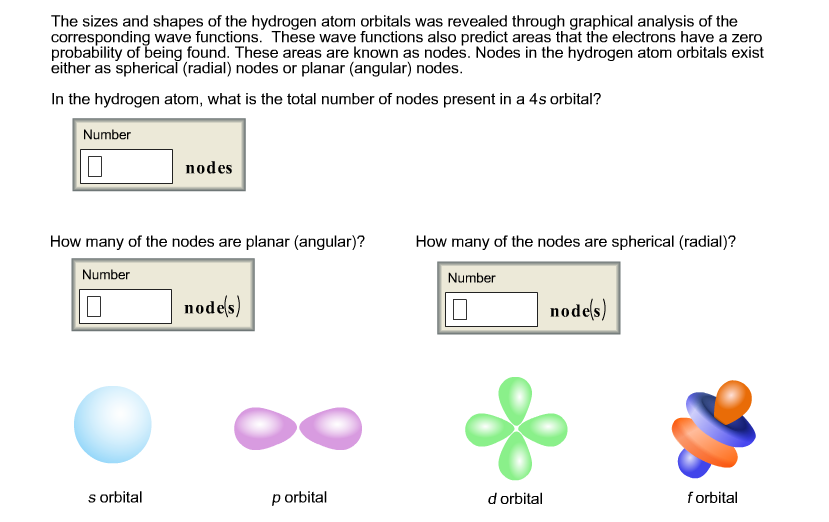

#THE HALOGEN WITH ELECTRONS IN THE ATOMIC ORBITALS. FULL#
By sharing electrons in a covalent bond full outer electron shells are achieved. All the Group 17 elements are molecules containing two atoms. Halogens gain an electron in reactions to form negative ions with a -1 charge and they are 1 electron less than a full octet. Must be heated strongly and so does the iron wool. Reacts with heated iron wool very quickly. Very few scientists handle fluorine because it is so dangerous. Table 2: Reaction of halogens with iron wool Halogen

The same goes for bromine (4s 2 4p 5 ), iodine (4s 2 4p 5 ), and astatine (5s 2 5p 5 ).Thus it is ironic that they are neighbors to the Group 8 noble gases, the least reactive among the elements. Note that only the energy level changes, but not the electron configuration at the highest energy level. Fluorine, on row 2, has a valence-shell configuration of 2s 2 2p 5 while that of chlorine is 3s 2 3p 5. The rows in the periodic table show increasing energy levels and the levels rise as one moves up the list of halogens. Therefore fluorine is the most reactive and it produces stable ionic salts and covalent compounds due to highest electronegativity. The electron when reaching the fluorine octet stays intact due to closeness to the nucleus. There is more attraction which makes it easier to gain an extra electron. Hence, they are monovalent with common valency of -1.Fluorine is the most reactive halogen because the electron it is attracting is coming into a shell closest to the positive nucleus. They share unpaired electrons to form covalent bonds as well.

They obtain the octet by accepting one electron to produce a univalent anion, X – (F –, Cl –, Br – and I –). These elements are a part of the p block. The general electronic configuration is ns 2np 5 and the last electron occupies p orbital. They can easily obtain a full octet by gaining one electron. Table 1: Electronic configuration of group 17 elements.Īll halogens have seven electrons in their outermost shell comprising completely filled s orbital and p orbital with 5 electrons. Fig 1: Arrangement of electrons in the first three elements of the halogen family.


 0 kommentar(er)
0 kommentar(er)
